What to Know
Finding the best dog grooming blades for your furry friend can be a daunting task, especially with so many options available in the market. Understanding the basics of dog grooming blades and selecting the right one tailored to your pet’s specific needs is essential for maintaining their health and appearance. In this article, we will guide you through the process of choosing the ideal dog grooming blade that suits both your preferences and your pet’s needs.
Grooming your dog at home has numerous benefits, including saving money, bonding with your pet, and ensuring their comfort during the grooming process. However, it’s essential to have the right tools and knowledge to provide the best grooming experience for your dog. Different breeds and coat types require unique blades and grooming techniques, so it’s important to understand which grooming blades are best suited for your pet’s individual needs.
Key Takeaways
- Selecting the ideal dog grooming blade is crucial for maintaining your dog’s appearance and health.
- Understanding the basics of grooming blades and considering factors such as breed and coat type will help you find the best blade for your pet.
- Proper usage and maintenance of grooming blades will ensure a positive and effective grooming experience for both you and your dog.
Understanding the Basics of Dog Grooming Blades
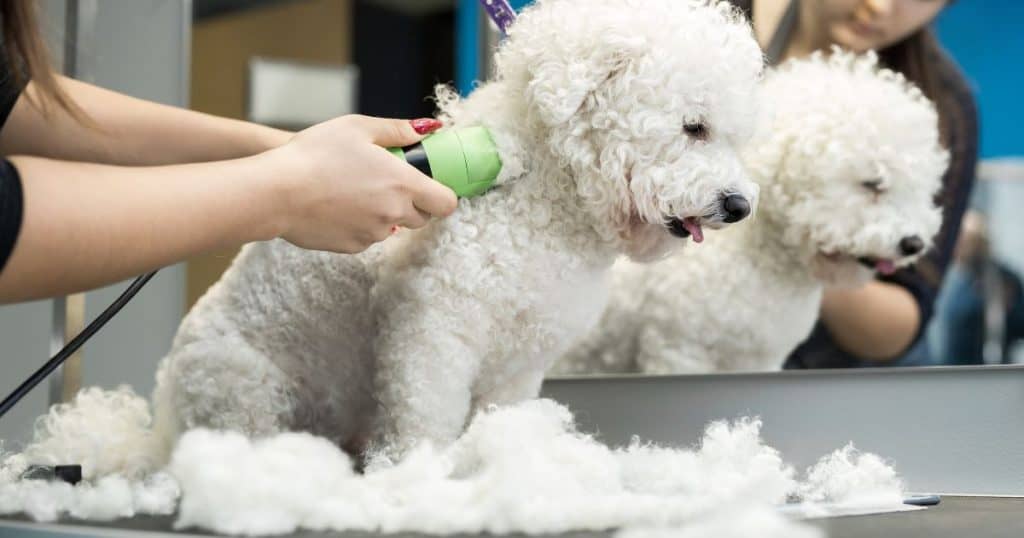
When it comes to keeping your fluffy dog well-groomed, choosing the best dog grooming blades is essential. In this section, we will cover the basics of dog grooming blades, including the types of blades and blade sizes, to help you make an informed decision for your pet’s grooming needs.
Types of Blades
There are several types of dog clipper blades, each designed for specific purposes or dog breeds. Some common types include:
- Standard blades: These are the most common dog grooming blades and can be used for a variety of cuts and styles. They work well for most breeds and coat types.
- Wide/T-Blades: These blades have a wider cutting surface than regular blades, making them suitable for larger breeds or faster stripdowns. Wide/T-Blades are often used by professional groomers for quicker grooming sessions.
- Surgical blades: Primarily used by veterinarians for prepping an area for surgery by removing hair down to the skin, these blades can also be utilized for show cuts on Poodles or other breeds with similar coat types.
Blade Sizes
Dog clipper blades come in various sizes, with each size representing the length of the hair that will be left after grooming.
Some common blade sizes include
- #10 blade: This blade leaves the hair about 1/16 inch long and is suitable for sanitary areas or for dogs with matted fur.
- #7 and #5 blades: These blades leave the hair about 1/8-inch and 1/4-inch long, respectively. They are often used for body clipping on various breeds.
- #4 and #3 blades: These blades leave the hair about 3/8-inch and 1/2-inch long, respectively. They are suitable for longer cuts on dogs with thick or curly coats.
It is crucial to choose the correct blade size according to your dog’s coat type, length and desired grooming style. Selecting the wrong blade could result in an uneven cut or, at worst, even cause potential injury to your pet. Familiarizing yourself with the different types of dog clipper blades is key to mastering dog grooming at home.
Remember to keep your dog’s comfort and safety in mind when choosing the best dog grooming blades. By understanding the basics of dog grooming blades and selecting the appropriate type and size, you are well on your way to keeping your fluffy dog looking and feeling their best.
Selecting the Right Blade for Your Pet
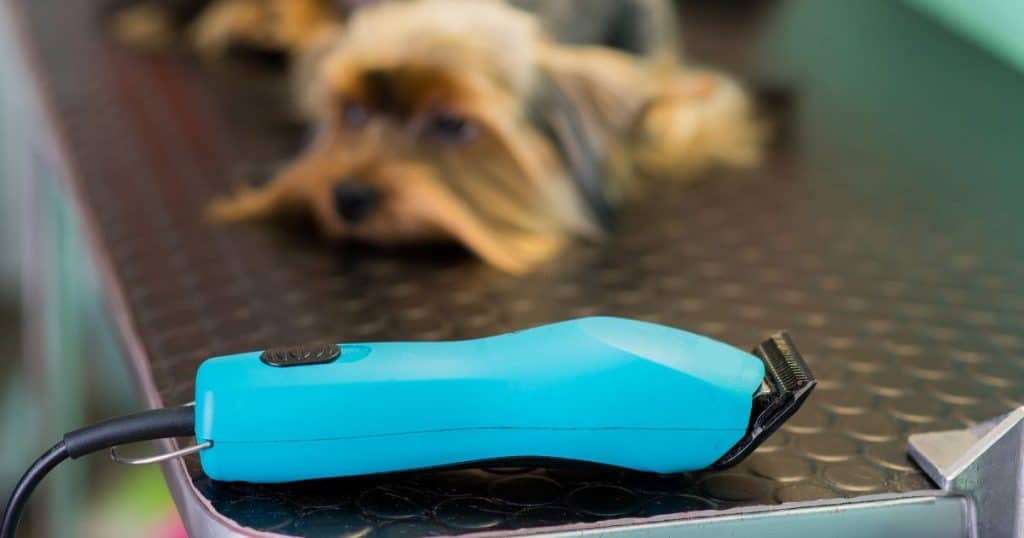
Choosing the best dog grooming blades for your pet can be a daunting task, but it’s an essential step in maintaining their health and appearance. In this section, we’ll provide some tips on finding the perfect blade for your pet’s coat type, whether they have a short or fluffy coat.
Firstly, it’s important to determine your pet’s coat type, as this will dictate which blade size and material you’ll need. If your dog has a short coat, like a Labrador or Beagle, you’ll want to opt for blades with closer teeth spacing, such as a #10 or #15 blade. This will allow you to easily trim their hair without snagging or cutting too close to the skin. On the other hand, if you have a fluffy dog with a thicker, longer coat, like a Poodle or Shih Tzu, wider-toothed blades such as a #4 or #5 blade will be ideal for effectively grooming their fur.
Different blade materials also offer various benefits. For instance, steel blades are known for their durability and sharpness, making them suitable for most coat types. However, for pets with sensitive skin or easily tangled fur, you may want to consider using a ceramic blade, as they produce less heat and stay sharper for longer.
When selecting the right blade for your pet, it’s also crucial to consider factors such as the dog’s age, overall health, and grooming requirements. Younger dogs might be more energetic and require more frequent grooming, while older dogs might have more delicate skin and need special care.
It is often recommended to use comb attachments for added control and safeguarding against accidentally cutting your pet’s hair too short. Comb attachments are available in multiple lengths, so you’ll be sure to find one that suits your pet’s coat requirements. Utilizing a comb attachment can help maintain a consistent length throughout the grooming process, ensuring your pet looks neat and tidy.
In summary, selecting the best dog grooming blades for your pet ultimately comes down to understanding their coat type, individual needs, and preferences. Keep these guidelines in mind, and you’ll be well on your way to providing your furry friend with a comfortable and effective grooming experience.
Guide to Popular Blade Brands
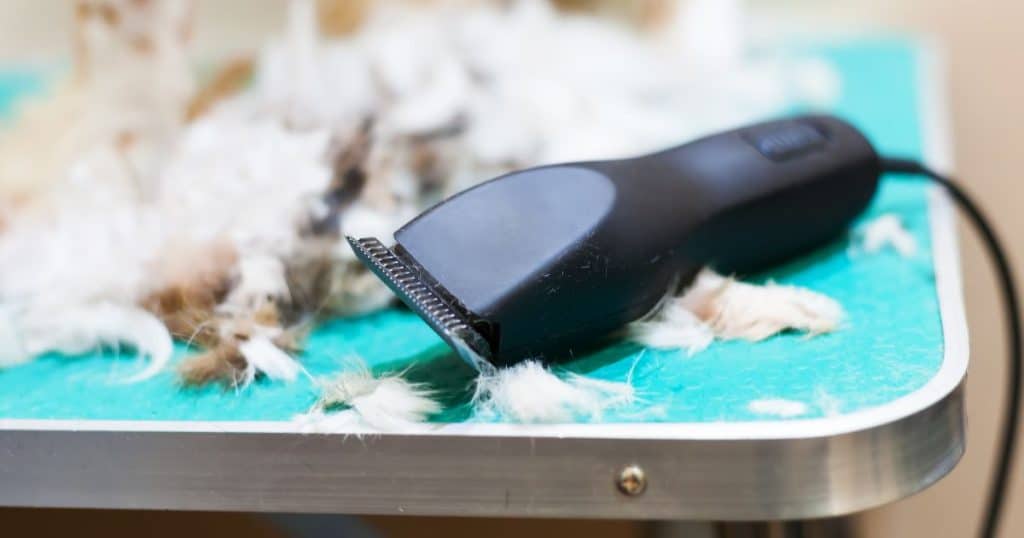
When it comes to finding the best dog grooming blades for your furry friend, there are several well-known brands to choose from. In this section, we’ll discuss four popular blade brands: Wahl, Andis, Oster, and Petedge.
Wahl Blades
Wahl offers a variety of blades for dog grooming, and the brand is well-known for its high-quality and reliable products. Their blades are designed to be sharp and long-lasting, making them a top choice for professional groomers and pet owners alike. Some popular types of Wahl blades include:
- Standard blades: These are versatile blades that can be used on various dog breeds and coat types.
- Fine-toothed blades: Ideal for dogs with fine and short hair.
- Skip-toothed blades: Well-suited for dogs with thick or matted coats.
Andis Blades
Andis is another reputable brand in the dog grooming industry. Like Wahl, they offer a range of blade types and sizes that cater to different grooming needs. Andis blades are known for their durability, precision, and long-lasting performance. Some popular Andis blade options include:
- UltraEdge blades: These are made of carbon-infused steel, providing extra strength and longevity.
- CeramicEdge blades: These blades feature ceramic cutting elements, which provide a cooler cutting experience and are less prone to dulling.
- ShowEdge blades: Designed specifically for show dog grooming, these blades offer a smooth, professional finish.
Oster Blades
The Oster brand is known for its innovative grooming solutions that cater to various dog breeds and coat types. Oster blades are crafted from high-quality materials that offer long-lasting sharpness, ensuring you get the best grooming results for your pet. Some popular types of Oster blades include:
- CryogenX blades: These are put through a unique cryogenic hardening process, ensuring they stay sharp for longer.
- A5 blades: Compatible with the Oster A5 grooming clipper, these blades are available in various sizes and styles for a custom grooming experience.
Petedge Blades
Petedge is another popular brand among pet groomers, offering a range of dog grooming blades that cater to different needs. Petedge blades are made from high-quality materials, ensuring longevity and optimal performance. Some of their popular blade options include:
- Double-toothed blades: These blades are perfect for getting through thick or matted coats with ease.
- Detachable blades: If you need to switch between different blade sizes quickly, Petedge’s detachable blades offer a convenient solution.
In summary, there is a multitude of blade options available from these popular dog grooming brands. By understanding your dog’s coat and grooming needs, you can make an informed decision and find the best dog grooming blades to keep your pet looking and feeling their best.
Stainless Steel Vs Ceramic Blades
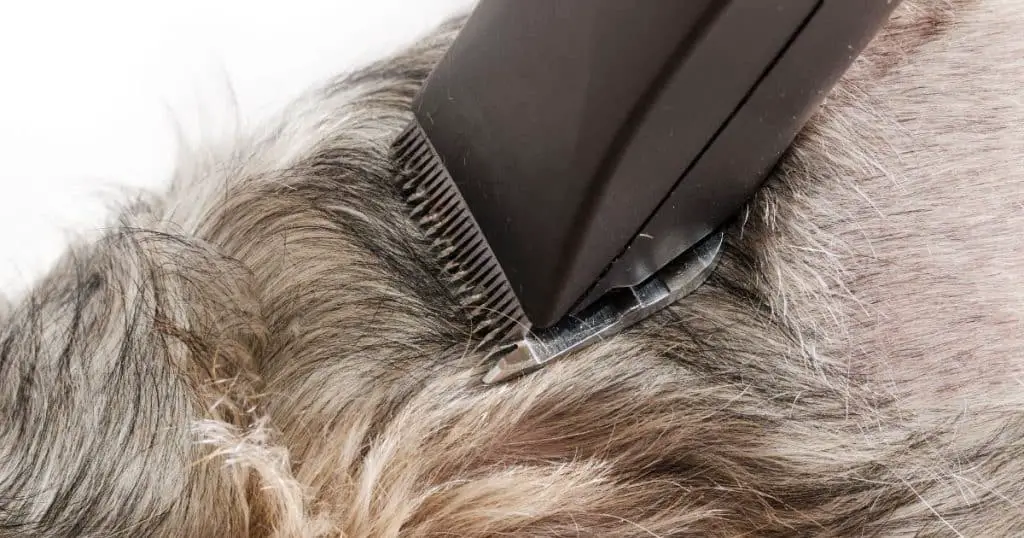
When it comes to selecting the best dog grooming blades, you have two primary options: stainless steel and ceramic cutters. Both types of blades have their unique attributes that cater to different needs and preferences. As you embark on your journey to find the perfect blade for your furry friend, understanding the key differences between these materials can help you make an informed decision.
Stainless Steel Blades
Stainless steel is a popular choice among professional groomers and pet owners for its durability, strength, and affordability. These blades are made from high-quality steel, which is resistant to rust and corrosion, ensuring that they will last for many grooming sessions.
One advantage to using stainless steel blades is that they are typically easier to sharpen, maintaining a sharp edge for a more extended period. Additionally, they can withstand more frequent use, which is vital for those who groom their pets regularly. However, stainless steel blades may heat up during long grooming sessions, which could potentially cause discomfort to your dog and require breaks in between.
Ceramic Cutters
If you’re seeking a more advanced option, ceramic cutters might be the right fit for you. Ceramic blades are known for their excellent cutting abilities and reduced heat generation compared to their steel counterparts. As a result, your furry friend will experience a more comfortable grooming experience, as the blades will remain cooler throughout the process.
However, it’s essential to consider that ceramic cutters are generally more fragile than steel blades, making them prone to breakage if not handled carefully. They also tend to be more expensive, as the premium materials add to the overall cost.
In conclusion, both stainless steel and ceramic cutters have their pros and cons when it comes to grooming your dog. Stainless steel blades are durable, easy to sharpen, and more affordable, making them an excellent choice for pet owners on a budget. On the other hand, ceramic cutters provide a more comfortable grooming experience and reduce heat generation, but they can be fragile and more costly. Ultimately, the choice between these two types of best dog grooming blades will depend on your individual needs and preferences, as well as your beloved pet’s comfort during the grooming process.
Usage of Different Blade Sizes
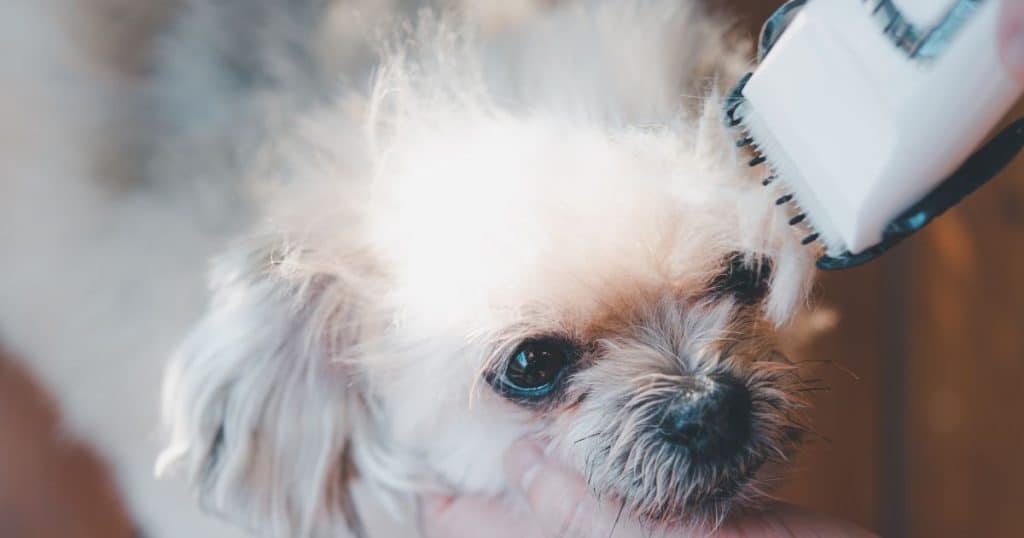
When it comes to grooming your furry friend, using the right blade size is essential for achieving the desired look and maintaining their comfort. In this section, we’ll discuss the usage of different blade sizes, such as the 10-blade, 30-blade, 4F blade, and 5-blade, and how each of them plays a crucial role in grooming your dog efficiently.
10 Blade
The 10-blade is one of the most versatile and commonly used blades in dog grooming. This blade is perfect for areas that require a short, smooth cut, such as the face, ears, and sensitive areas on your dog’s body. The 10-blade is also ideal for dogs with matted or dirty fur, as it can cut close to the skin without causing irritation. Some popular dog breeds that benefit from this blade size include Poodles, Maltese, and Shih Tzus.
30 Blade
The 30-blade is a finer and more precise blade, often used for closer cuts and delicate areas. This blade is ideal for trimming the hair around your dog’s paw pads and can be used in conjunction with clipper guards to achieve a longer cut length on the coat. The 30-blade is suitable for breeds like Pomeranians and Yorkshire Terriers, and it’s also helpful for finishing touches on well-maintained coats.
4F Blade
The 4F blade is a more specialized blade, designed for use on dogs with thick or double coats. It works well for removing bulk and achieving a uniform, medium-length cut. The 4F blade is great for breeds like Golden Retrievers, Cocker Spaniels, and Newfoundlands, as it can efficiently tackle their dense and heavy fur while providing a neat and polished look.
5 Blade
Using the 5 blades allows for a slightly longer cut than the 4F blade but also provides a clean and smooth finish. This blade is an excellent choice for full-body grooming on breeds with medium to dense coats, such as Schnauzers, Labradors, and Boxers. The 5 blades can also be used for blending and shaping, creating a professional and well-groomed appearance for your beloved pet.
In summary, using the best dog grooming blades tailored to your dog’s specific coat type and grooming requirements is essential for achieving a professional, comfortable, and efficient grooming experience. By selecting the appropriate blade size for your dog’s breed and fur type, you can ensure a smooth and stylish result while minimizing any discomfort or irritation for your furry friend.
Ordering and Maintenance of Blades
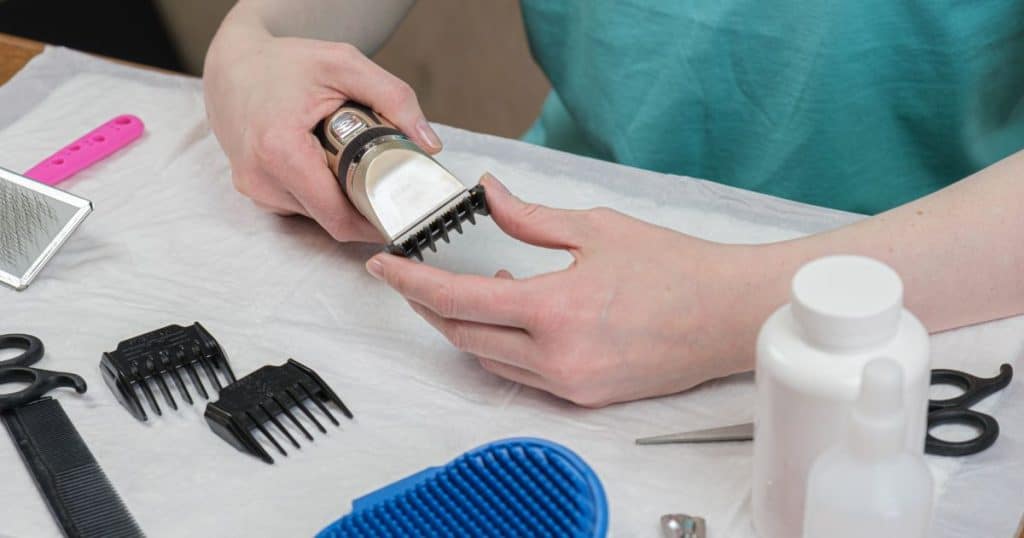
When it comes to choosing the best dog grooming blades, it is crucial to consider factors such as blade material, size, and type to ensure a smooth and comfortable grooming experience for your fluffy dog. To get started, you’ll want to obtain high-quality blades that are durable and well-suited for your dog’s specific hair type and length.
Ordering blades from a reputable dealer might seem overwhelming due to the variety of options available, but online retailers often offer detailed product descriptions to help you make an informed decision. Before committing to a purchase, double-check the blade size and compatibility with your dog grooming clipper.
After acquiring your shiny new blades, maintaining them is essential to prolong their durability and keep them in perfect condition. To do this, incorporate the use of blade oil regularly, as it helps the clippers run smoothly and efficiently. Apply a few drops of blade oil on the moving parts and teeth of the blade before and after each grooming session.
Cleaning the blades is another crucial aspect of maintenance. Remove hair and debris from the blades after each use, preventing buildup that can hinder performance. Use a brush or compressed air to easily clean the blades, and consider applying a blade wash to remove any remaining dirt or grime.
Sharpening is also necessary to maintain optimal performance, as dull blades tend to cause discomfort for your dog during grooming. Stay alert to signs that your blades need sharpening, such as slow cutting speed, pulling or tugging on the hair, or visible signs of wear. It’s best to have your blades sharpened professionally every few months to ensure precision and accuracy.
In summary, taking the time to order the appropriate blades for your dog grooming needs and maintaining their cleanliness and sharpness will make for a more efficient and comfortable grooming experience. As you adhere to these maintenance tips, your best dog grooming blades will keep up with you and your fluffy companion for years to come.
Grooming Blades for Specific Body Parts
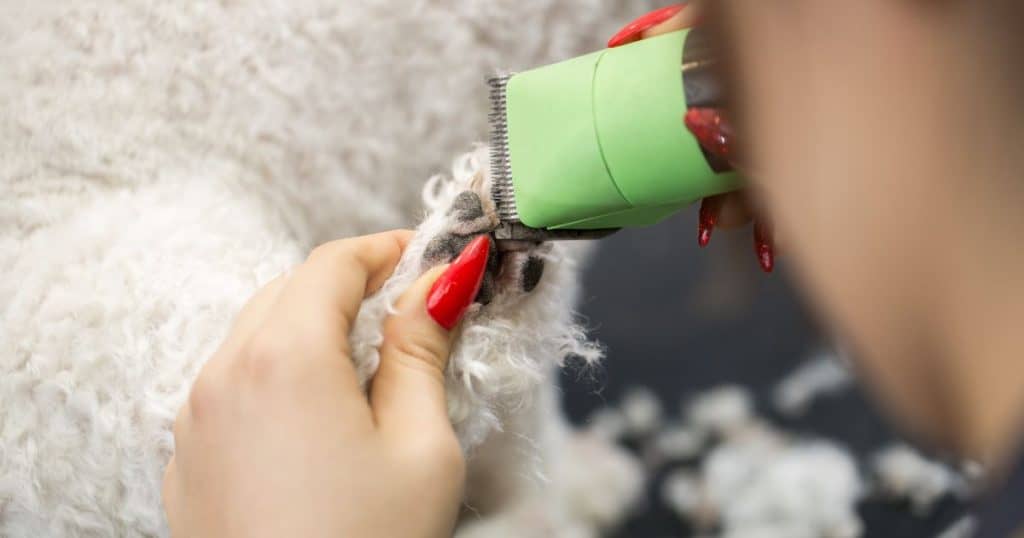
As an expert in dog grooming, it’s crucial to know what blades are suitable for different body parts, such as the neck and groin, to ensure your fluffy dog is groomed to perfection. In this section, we will discuss the recommended blades for both the groin and neck areas, providing practical and informative advice for a well-groomed pet.
Groin Area Grooming
The groin area of a dog is sensitive, and extra care must be taken when grooming this part. It’s important to choose the best dog grooming blades that provide a close, but safe, cut without irritating the skin. A popular choice for grooming the groin area is the #10 blade. This blade offers a consistent 1/16″ (1.5mm) cut, ensuring enough length to avoid nicking your dog’s skin. Remember to always maintain a gentle hand and create a comfortable experience for your pet during the grooming process.
Neck Area Grooming
For the neck area, selecting the best dog grooming blades depends on your dog’s breed and coat type. In general, you may choose between a variety of higher-numbered blades, such as #4 or #5 blades, which leave a longer coat length while still providing a smooth finish. However, if your dog has thick or matted fur, it’s crucial to use a skip tooth clipper blade, like a 4 or 5-skip tooth, to prevent any tugging or pulling on the hair.
When grooming the neck area, be mindful of your dog’s comfort, and pay attention to areas that may be more challenging, such as the mane or collar region. It’s also essential to maintain a steady hand and hold the blade flat against the skin to avoid skin irritation.
In summary, when choosing the best dog grooming blades for the groin and neck areas, it’s essential to consider safety, precision, and the desired coat length. With the right tools and techniques, you can achieve a professional grooming result for your fluffy dog, leaving them looking and feeling their best.
Grooming Tools for Different Dog Breeds
When it comes to keeping your dog well-groomed, choosing the best dog grooming blades is essential for achieving the desired results. In this section, we will discuss grooming tools specific for different dog breeds, such as poodles and short-coated breeds.
Grooming Poodles
Poodles are known for their thick, curly coats that require regular grooming to prevent matting and tangling. Here are some essential tools and tips to help you groom your poodle with ease:
- Use a dog clipper with adjustable blade sizes to accommodate the varying hair lengths on your poodle’s body. For instance, a #10 blade is suitable for sanitary areas, while a #9 blade works best for the head, neck, and ears.
- Slicker brushes are ideal for removing loose hair and tangles before using the clippers.
- A comb with both wide and narrow teeth can help you detangle and smooth your poodle’s hair after clipping.
- Poodle-specific shears or scissors are helpful for shaping and trimming their unique topknots and pom-poms.
Remember to groom your poodle regularly to maintain their coat’s health and appearance.
Grooming Short-Coated Breeds
Dogs with short coats, such as Labrador Retrievers or Beagles, also benefit from proper grooming using the best dog grooming blades.
These breeds generally need less intensive grooming compared to poodles, but still require specific tools and techniques:
- Use a Wahl Lithium Ion Pro Series clipper for trimming hair around the ears, face, and feet. These clippers have high-carbon blades that stay sharp and are suitable for both small and large dog breeds.
- A bristle brush is perfect for removing loose hair from short-coated breeds, resulting in a sleek, shiny coat.
- A de-shedding tool, such as the Furminator, can help reduce shedding and keep your dog’s coat in top condition.
- Nail clippers and a file are essential for maintaining your dog’s nails at a comfortable and safe length.
By choosing the best dog grooming blades and tools specific to your dog’s breed, you can keep your furry friend looking and feeling great. Regular grooming sessions not only help maintain your dog’s appearance but also provide an opportunity for you to bond with your pet.
Special Blade Features
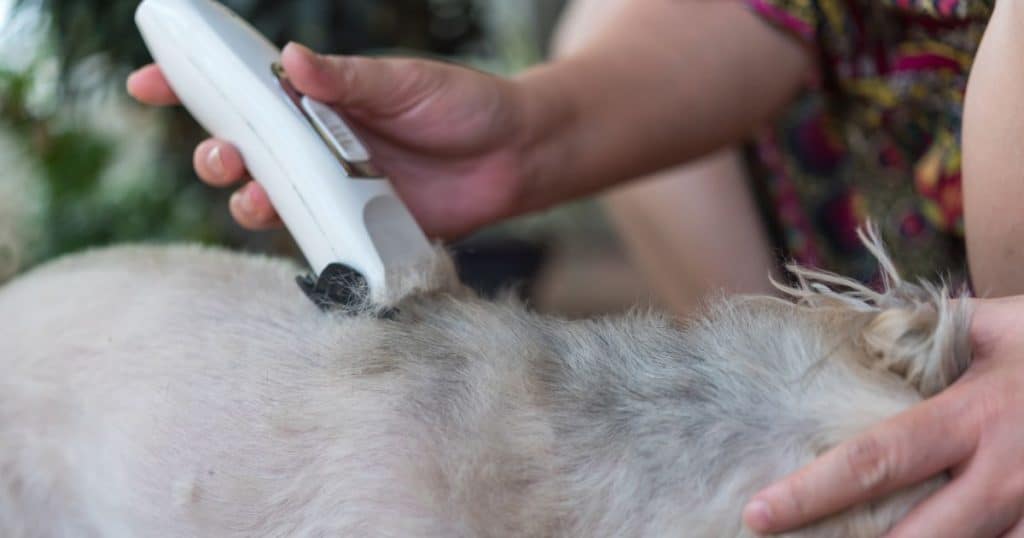
When selecting the best dog grooming blades, it’s essential to consider their special features. In this section, we will cover some of the unique blade features such as skip tooth blades, guard combs, ShowEdge blades, and attachment combs. This information will help you make an informed decision when choosing the right blade for your dog’s grooming needs.
Skip tooth blades have teeth spaced further apart, leaving more hair on the dog when used. They’re ideal for rough cutting, removing heavy coats, or prepping a dog for a smoother finish with fine-toothed blades. Skip tooth blades can be useful when grooming dogs with thicker or matted fur and are available in various sizes to cater to different grooming requirements.
Guard combs (also known as guide combs) are attachments that can be fitted over standard grooming blades to dictate hair length. They’re excellent for beginners as they allow for more control and precision while grooming. Guard combs come in different sizes that determine the length of the hair remaining after trimming. They work well with A5 blades, which are universal and interchangeable with most clipper brands.
ShowEdge blades provide a smoother finish to the dog’s coat. They are designed with a flatter shape, helping them glide through the hair more efficiently, minimizing lines, and reducing the grooming time. ShowEdge blades work well for show dogs, particularly when a polished, seamless look is desired, such as with Poodles.
Attachment combs are similar to guard combs, allowing you to adjust the length of the hair left on the dog after grooming. These combs snap on grooming blades, making them easy to use and interchange during a grooming session. Attachment combs are suitable for various breeds and coat types, offering versatility in your grooming kit.
In conclusion, the best dog grooming blades should have features that cater to your specific grooming needs and your dog’s coat type. Considering options like skip tooth blades, guard combs, ShowEdge blades, and attachment combs will help you make the right decision for your furry friend. Happy grooming!
Grooming Kit Essentials
When it comes to maintaining your fluffy dog’s appearance, it’s essential to have the best dog grooming blades and tools in your grooming kit. This ensures that your dog looks sharp, stays healthy, and feels comfortable. In this section, we will discuss the crucial items to include in a grooming kit for your canine friend.
Firstly, you’ll need a high-quality pair of clippers with durable, sharp grooming blades. A popular choice among pet owners is the Oneisall Cordless Dog Grooming Kit. These clippers help to achieve a precise and comfortable cut, which is essential for your dog’s well-being.
Additionally, a pair of scissors will come in handy for trimming around sensitive areas and giving your dog’s coat a more polished finish. You may want to consider options like the TINMARDA Professional Dog Grooming Scissors Kit, which features safety round tips designed to prevent accidental injuries during the grooming process.
If your dog has a thick coat or tangles are a concern, a grooming comb or brush is a must-have. Brushes help remove any loose hair and keep your dog’s coat looking healthy and shiny. The type of brush you need will depend on your dog’s coat type – consult a professional groomer or a reputable online guide for recommendations tailored to your pet’s needs.
Nail care is another essential aspect of a well-rounded grooming routine. When you think of grooming your dog, don’t forget about their paws! Clipping or filing your dog’s nails regularly can prevent overgrowth, which could lead to discomfort and even injury. The Casfuy Dog Nail Grinder is a popular choice for pet owners, as it provides a safe and efficient way to maintain your furry friend’s paw health.
In addition to the tools themselves, you’ll need some essential grooming products to keep your dog clean and feeling fresh. This includes a high-quality pet shampoo or conditioner that is specifically formulated for your dog’s coat type, as well as a selection of grooming wipes or sprays for spot cleaning when necessary.
In summary, the key components of a functional grooming kit for your canine companion are the best dog grooming blades and clippers, scissors, a brush or comb, nail care tools, and appropriate grooming products. By assembling a comprehensive grooming kit, you can ensure that your fluffy dog stays looking and feeling their best.
Handling Special Grooming Scenarios
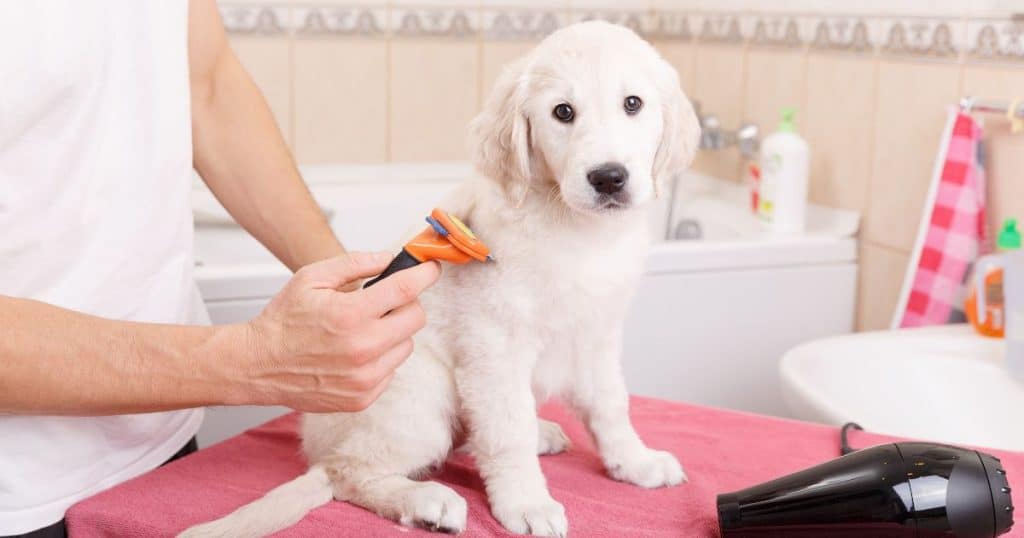
When dealing with special grooming scenarios, such as matting or shave downs, you’ll need the best dog grooming blades to ensure a painless and efficient process. Tackling these situations requires extra care to avoid harming the dogs and achieve the desired results.
Matting can be a nightmare for both you and the dog. It’s crucial to use a combination of a deshedder and a clipper with suitable blades, like a #10 blade and a #30 blade, to gently remove the matted fur. These blades have fine teeth that help you navigate through the tangled fur without hurting their delicate skin. Remember to always work slowly and methodically to avoid any sudden movements that might cause discomfort or injury.
Shave-downs come with their own set of challenges. While some breeds might require a full shave down from time to time, it is essential to use the appropriate equipment for a smooth and even cut. Your go-to blades for a shave-down should be #5 or #4 blades. These blades ensure an even cut and help prevent clipper lines. As always, monitor the blade temperature and lubricate as needed to protect the dog’s skin.
It’s essential to understand the specific needs of each dog, especially when handling special grooming scenarios like matting and shave-downs. By using the best dog grooming blades and proper techniques, you’ll be able to provide a pain-free and efficient grooming experience for both you and your fluffy dog clients. Ensure you keep the blades clean, dry and well-maintained to guarantee their longevity and optimal performance.
Cost Analysis
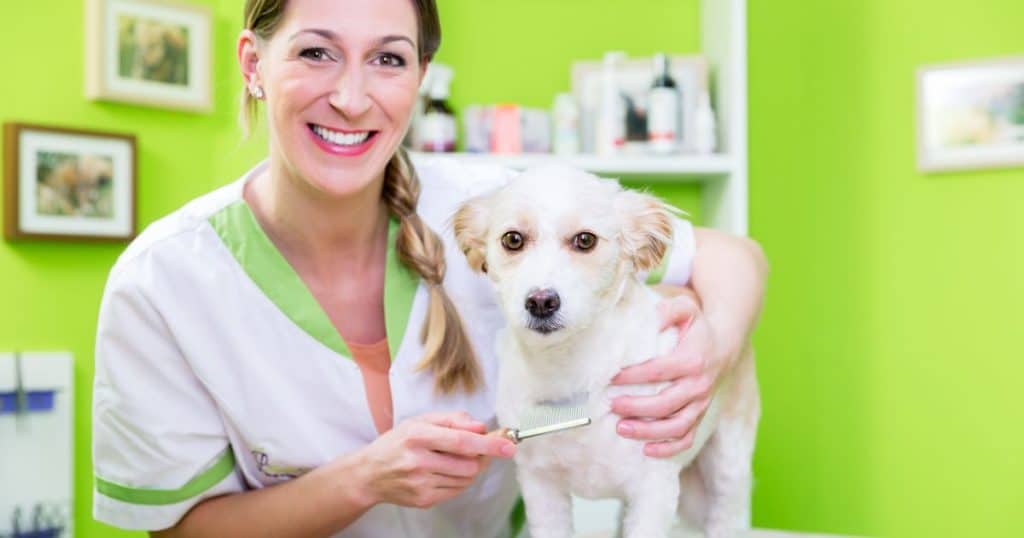
When it comes to choosing the best dog grooming blades, the cost is certainly a factor to consider. Grooming blades come in a wide range of prices, with an average cost of around $31.96. Depending on the brand and quality, the prices can range from a low of $16.44 to a high of $51.
It’s important to remember that investing in a quality grooming blade for your fluffy dog not only ensures a smooth grooming process but also translates to greater durability and reduced need for frequent replacements. Reputable brands like Andis, Oster, and Wahl offer various options that cater to different grooming needs and budgets.
When evaluating the cost of grooming blades, it’s also essential to consider the type of blade material. The most common options are steel and ceramic blades. While steel blades are known for their durability and affordability, some owners prefer ceramic blades as they tend to stay cooler during use. Of course, you’ll also come across carbon-coated or titanium blades, which offer added durability and precision cutting.
While it might be tempting to opt for the cheapest available grooming blade, it’s crucial to balance cost with quality. By investing in a well-designed blade, you can ensure that your dog’s grooming sessions are efficient and comfortable. Additionally, a quality blade can help you avoid common grooming issues like uneven cutting, pulling, or snagging, which can cause discomfort or distress to your dog.
As you explore the various options for the best dog grooming blades, be sure to compare the features and benefits offered by different brands and materials. Keep in mind that a higher upfront cost may ultimately save you money in the long run if the blade lasts longer and offers better performance. To make an informed decision, take the time to read product reviews and consider the specific grooming needs of your fluffy dog before making a purchase.
In conclusion, finding the best dog grooming blades for your fluffy friend requires careful consideration of factors such as cost, quality, and material type. By making an informed decision, you can look forward to smooth, efficient, and comfortable grooming sessions for both you and your dog.
Final Thoughts on the Best Dog Grooming Blades
Choosing the right dog grooming blades is essential for achieving a smooth and comfortable grooming experience for your fluffy friend. The best dog grooming blades enable you to maintain your dog’s coat in top condition, avoiding matting and maximizing your pet’s comfort.
When selecting the best dog grooming blades, it’s important to consider factors such as blade material, size, and compatibility with your grooming clippers. Some grooming blades can be carbon-coated or titanium, each offering its advantages with durability and cutting performance. Additionally, the blade size will determine the length of the cut, so it’s crucial to select the appropriate one for your dog’s specific coat type and grooming needs.
Aside from the blade itself, consider investing in grooming kits that include additional tools like comb attachments, scissors, and other vital grooming implements. This way, you’ll have a comprehensive grooming arsenal at your disposal whenever your pet needs a touch-up.
As you begin grooming your dog at home, remember to keep blade safety in mind. Make sure to clean and maintain your blades regularly to extend their lifespan and keep them in optimal condition. Lubricate the blades and routinely check for any damage or imperfections that could affect the grooming process.
To sum it up, the best dog grooming blades can make all the difference in the grooming experience for both you and your furry companion. By considering the factors mentioned above and doing thorough research, you can find the perfect blades to achieve a professional-looking groom from home. Happy grooming!
FAQs
What type of clipper blades are best for thick dog hair?
For dogs with thick hair, you may want to consider using blades specifically designed for coarse coats. Wide blades, like the Andis 3 3/4 FC, are a good option as they can cover more ground and help prevent uneven cuts. Detachable blades, like those from PetEdge, are also beneficial as they provide better cutting control and faster grooming.
Which grooming blade sets are most popular for dogs?
Grooming blade sets that are popular for dogs include Andis and Oster sets. These sets typically come with a variety of blade sizes, allowing you to customize your grooming sessions and achieve the perfect haircut for your furry friend. Popular blade sizes often include #10, #7, #5, and #4.
How do Andis and Oster clipper blades compare?
Andis and Oster clipper blades are both highly reputable brands in the pet grooming industry. Both offer high-quality, durable blades with good performance for dogs of various coat types. The main difference between the two brands may be the specific blade sizes and compatibility with different clippers. It’s essential to choose a blade compatible with your specific clipper model.
What are the advantages of ceramic blades in dog grooming?
Ceramic blades have several advantages in dog grooming. They tend to stay cooler for more extended periods compared to traditional steel blades, allowing for more comfortable and extended grooming sessions. Additionally, ceramic blades often stay sharper for longer, providing precise and even cuts.
Which clippers do professional groomers prefer for dogs?
Professional groomers often have preferences based on their personal experiences and the specific needs of the dogs they groom. Brands like Andis, Oster, and Wahl are popular choices among professional groomers due to their durability, precision, and overall performance. It’s crucial to consider the specific needs of your dog and your grooming skills when selecting the right clippers.
When should a 7-blade be used in dog grooming?
A 7-blade is mainly used for cutting medium to long hair lengths and thinning areas that may be prone to matting. This blade is suitable for breeds like Poodles and Shih Tzus, that require shorter trims or specific haircuts. Always ensure that you use a blade size suitable for your dog’s specific coat type and grooming needs to achieve the best results.
Remember to prioritize your dog’s comfort and safety when grooming at home and select the best dog grooming blades to fit their specific requirements.

